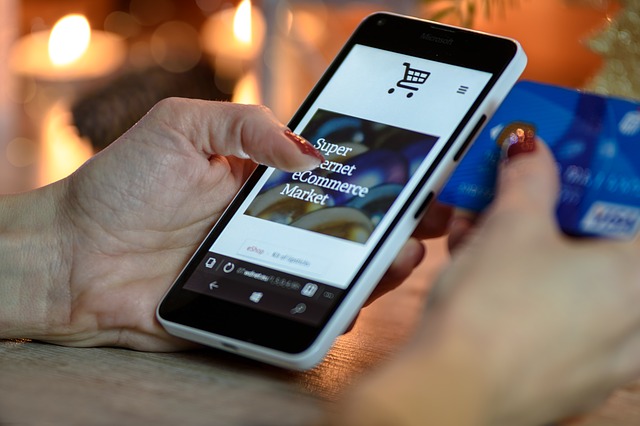Earlier shopping has become the “new normal” for holiday consumers shopping for gifts for Christmas, Hanukkah and Kwanza. The earlier shopping is something Brand Keys calls “Black November.” That’s because a quarter of all holiday shipping is now taking place in November before Black Friday.
The nomenclature, “Black Friday,” came into common retail usage in the 1980s. It originally was a derisive term, for the huge crowds of shoppers and traffic snarls that occurred the day after Thanksgiving, when many shoppers had a long holiday weekend and the time to shop. The more conventional meaning has to do with the fact retailers traditionally operated at a financial loss for most of the year and made their profit during the holiday season. A once-common accounting practice used red ink to show losses and black ink to show profits. Black Friday was the beginning of the period when retailers would actually make profits and operate “in the black.”
The shift away from Black Friday to Black November isn’t something that should come as a surprise to retailers. They’re pretty much responsible for the shift in the consumer buying pattern. Why?
Merchants entered a game, a version of retail poker where retailer after retailer kept raising the discount ante. First it was just a matter of pricing. As it got closer to Black Friday, the traditional start of the Holiday Shopping season, one retailer would promise price cuts of 10%. Another retailer would then advertise an offer of 20% off, and a third would then offer 25% off. And so on and so on, increasing the ante. This was all before price matching or the ubiquity of online price checking, but eventually the first retailer would end up in anything-you-can-do-I-can-do-too pricing mode and offer 25% off as well.
That got old quickly; it took nearly half a decade before it very reasonably occurred to retailers that if they sold a product to a consumer first, the consumer wouldn’t be in the marketplace for that same product from another retailer, the vendor version of, “The first man gets the oyster, the second man the shell!” But to do be first, a retailer had to offer consumer products and pricing before Black Friday. And they did. Earlier and earlier and earlier.
A consumer doesn’t have to look hard to see the results of those merchandiser moves. Vendors — both bricks, click and bricks-and-clicks — began to offer “Black Friday” specials as early as September. And October. Doorbusters, a term retailers coined to create earlier (and earlier) crowds in parking lots for traditional Black Friday sales, adorn advertising months before the actual Black Friday date and have become a term of retail puffery, used to evoke the thrill that used to actually be there for shoppers.
On top of all that, consumers became smarter and more socially-networked. They’re on to all of retailers’ strategies, promotions and ruses and have acted accordingly. The creation of Black November.
In the Brand Keys 2018 Holiday Shopping Survey more than half of the 11,625 the respondents drawn from the 9 US Census Regions (55%) indicated they’ve already shopped or intend to shop before the traditional Black Friday.
Retailers have acknowledged these shifts in the consumer-shopping paradigm and are acting on them with the previously referenced, earlier “Black Friday-like” sales. Here’s specifically what shoppers said in terms of when they planned — or had already shopped — for holiday gifts, with numbers in parentheses indicating a change from last year:
Before September: 5% (+1%)
September: 10% (+3%)
October: 15% (- 1%)
November (Pre-Black Friday): 25% (+3%)
Black Friday: 20% (- 5%)
December: 25% (+5%)
And what of Black Friday, the actual Black Friday, the day after Thanksgiving?
Brand Keys believes that Black Friday still represents a retail raison d’être, but only because of the long weekend. Weekends and long weekends customarily boost customer shopping and attendant sales, generally speaking. But tracking has indicated that Black Friday shopping has actually decreased over the past 10 years, replaced, Brand Keys believes, by Black November.
But more so Black Friday has become a tradition of sorts. For retailers, because it’s just what they’ve done for nearly four decades. Families, already gathered for their Thanksgiving dinners, think it’s fun to go out late at night or early in the morning to shop together, something akin to a habit or tradition.
Black Friday won’t just fade away to gray. But with nearly half of holiday shopping going on before that in Black November, and with increased online shopping accounting for nearly 10% of all retail sales, it is fast becoming a relic of 20th-century retailing.
Robert Passikoff, Brand Key’s founder and president, has pioneered work in loyalty and engagement, creating the Brand Keys Customer Loyalty Engagement Index, the Sports Fan Loyalty Indexâ, and the Women’s Wear Daily Fashion Brand Engagement Indexâ.
If you enjoyed this article, sign up for SmartBrief’s free e-mail from the Interactive Advertising Bureau, among SmartBrief’s more than 200 industry-focused newsletters.
